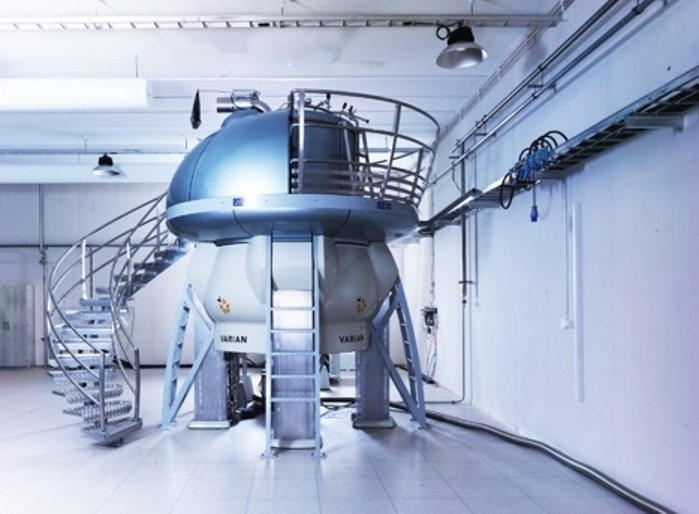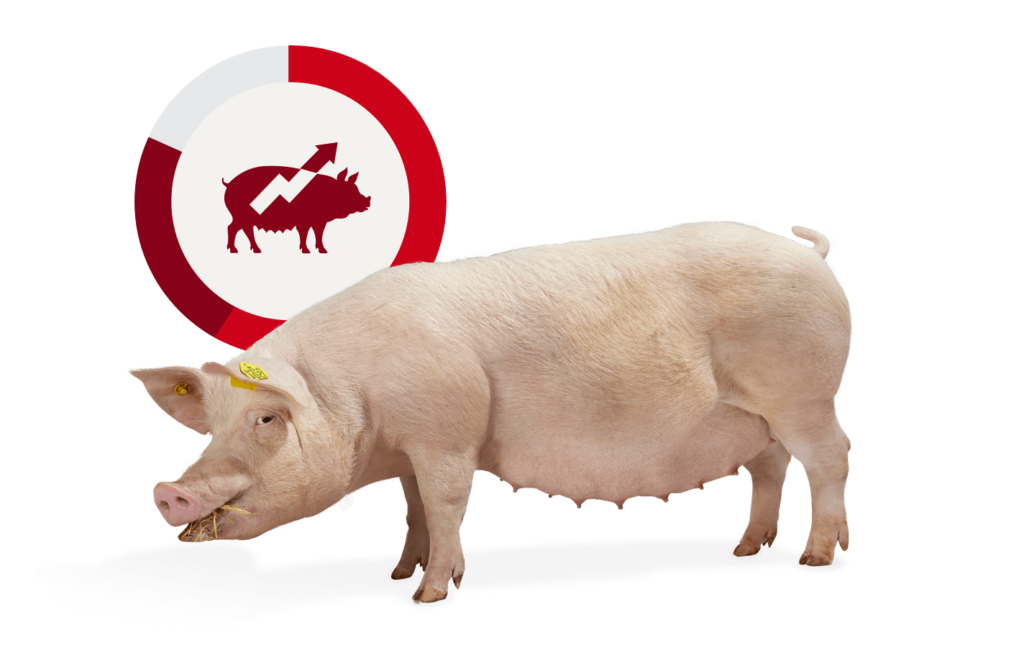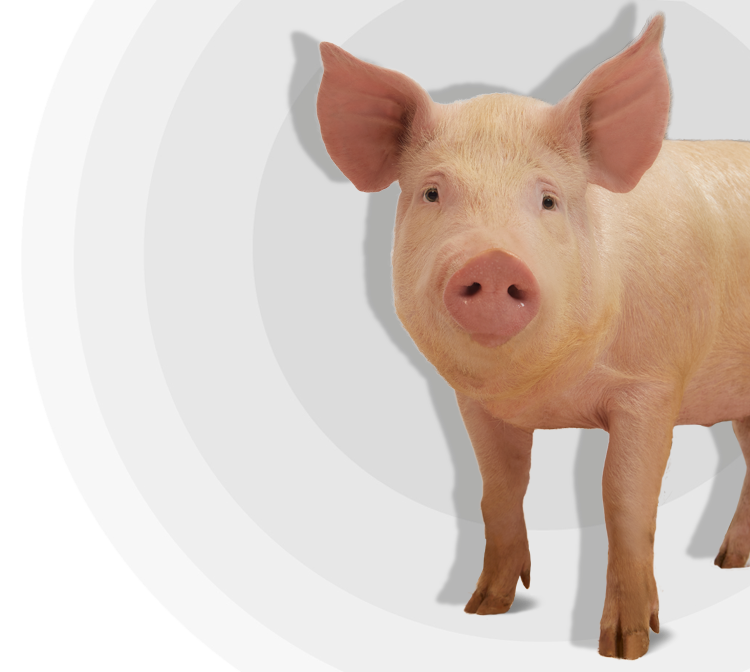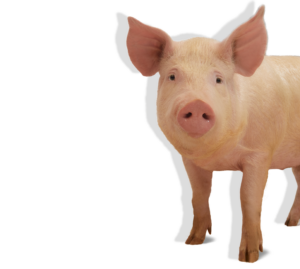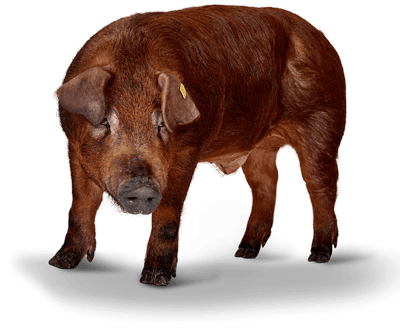Written by Dorthe Poulsgård Frandsen, Senior Specialist, SEGES Danish Pig Research Centre,
Abstract
Additional heat around the time of farrowing significantly increased the rectal temperature of piglets weighing 900 g or less. Rectal temperature is an indicator of piglets’ survival chances, ie. the higher the body temperature above the lower critical temperature, the better the chances of survival.
The effect of additional heat was investigated by installing two outdoor heaters on the sidewall of a traditional Danish farrowing pen, near the hind part of the sow. Piglets were weighed immediately after birth and rectal temperature was recorded on piglets weighing 900 g or less. A cold piglet was defined as a piglet with a rectal temperature of 35°C or below. Results revealed 25% cold piglets in the control group vs 16% in the trial group. This is a significant difference (P=0.028) and means that 0.28 small piglets were saved in each litter.
An alternative to installing additional heat could be to supply straw around the sow at farrowing, which is cheaper than outdoor heaters.
The development of new heat sources with the same heat output, a lower power consumption and high operational reliability would make it possible for pig producers to make a profit by installing additional heat sources on both sides of farrowing sows.
The first hours of a piglet’s life
At birth, piglets come from 38-39°C in the womb to 20-22°C in the pen. As a result, piglets’ body temperature drops by 2-4°C drop within the first few hours (Sørensen et. al., 2016). Energy reserves in newborn piglets are very low, and it is therefore essential that the piglets do not spend all their energy restoring their body temperature. If all energy reserves are spent, the piglets will not have the energy required to get to the udder (Thorup et. al., 2016).
Small piglets (900 g or less), in particular, are at risk of dying. They represent roughly 15% (Thorup et. al., 2016) of all piglets born in Danish herds, and as a low birth weight equals low survival, this group is particularly vulnerable (Hales 2011). A high temperature around the sow/piglets immediately after birth prevents piglets getting ‘too cold’ and spending their limited energy reserves on restoring body temperature.
The colder the surroundings, the larger the drop in body temperature among the small piglets. Piglets stay behind the sow for averagely six minutes after birth (Andersen & Pederson, 2015) and remain close to the sow the first days after birth. Consequently, newborn piglets will gain most benefit from the additional heat if the heat source is installed alongside the sow’s udder rather than behind the sow.
If additional heat is installed, it is paramount that it does not affect the sow negatively. Danish recommendations for optimum temperature in farrowing pens with partially slatted floors are 20 – 22°C from farrowing to day 4 followed by a gradual adjustment to 17 – 18°C approximately 14 days after farrowing. However, research has shown that the first 0 – 3 days after farrowing, sows move towards zones where the temperature is high, provided this is an option (Pedersen et. al., 2007, Phillips et. al., 2000). In that trial, sows preferred a floor temperature of 35°C rather than 22°C and 29°C, respectively, immediately after farrowing. This indicates that the sows will adapt to the temperatures that piglets thrive under.
The effect of additional heat
In a Danish herd with 1,200 sows/year, SEGES Danish Pig Research Centre investigated the effect of installing additional heat around the sow at farrowing in pens with fully slatted floors and that measured 2.70 m x 1.70 m; 2.60 m x 1.60 m; or 2.60 m x 1.50 m, respectively (see figures 1 and 2). A rubber mat was used as bedding in the creep, and heat lamps (100 W) or AniHeater (150 W) were used around farrowing. The creeps measured 1.20 m x 0.80 m.
In one farrowing section, two heat sources were installed half of the pens (trial); the other half of the pens had no additional heat source (control).
The heat source (= outdoor heater) was turned on when sows were observed to have milk in their teats. The outdoor heaters were placed on the sidewalls of the farrowing pens (see figures 1 and 2). The heat lamps in the creeps were turned on in both groups just before farrowing.

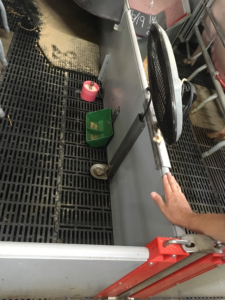
Figures 1 and 2. Outdoor heater placed in the left-hand and right-hand side, respectively, of a farrowing pen.
Regardless of the position of the outdoor heater, a temperature of 33 – 34°C was quickly achieved on a rather large part of the slatted floor (see figures 3 and 4). In the control pens (no heat), recordings showed a temperature of 20°C.
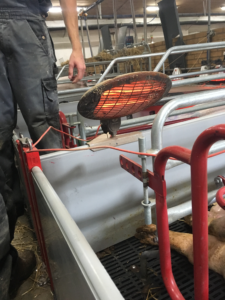
Figure 3. Outdoor heater is turned on.

Figure 4. Thermographic image of a farrowing pen where the outdoor heater is turned on.
The heat sources were turned off after the rectal temperature of the smallest piglets was recorded. Newborn piglets were handled twice daily: at 5:30 and 15:30. In this trial, rectal temperature was used as an indirect measure of a piglet’s chances of survival. Piglets with a rectal temperature of 35°C or less were defined as a cold piglet; piglets with a rectal temperature of 37°C or more were defined as a warm piglet.
The trial comprised 148 sows that gave birth to a total of 569 piglets weighing less than 900 g. Results revealed a larger percentage of cold, small piglets in litters born in pens with no additional heat compared with litters born in pens with outdoor heaters (25.2% vs 16.3%). This is a significant difference (P=0.028) (see table 1).
Table 1. Rectal temperature (median) in the control group and trial group.

Results also revealed a higher percentage of warm piglets in pens with additional heat compared with pens without additional heat (59.2 % vs 36.1 %). This difference was significant (P=0.001).
The additional heat around farrowing increased the rectal temperature on average by 0.8°C (from 35.8°C to 36.6°C) among piglets weighing less than 900 g at birth. Figure 5 shows the correlation between rectal temperature and piglet weight.
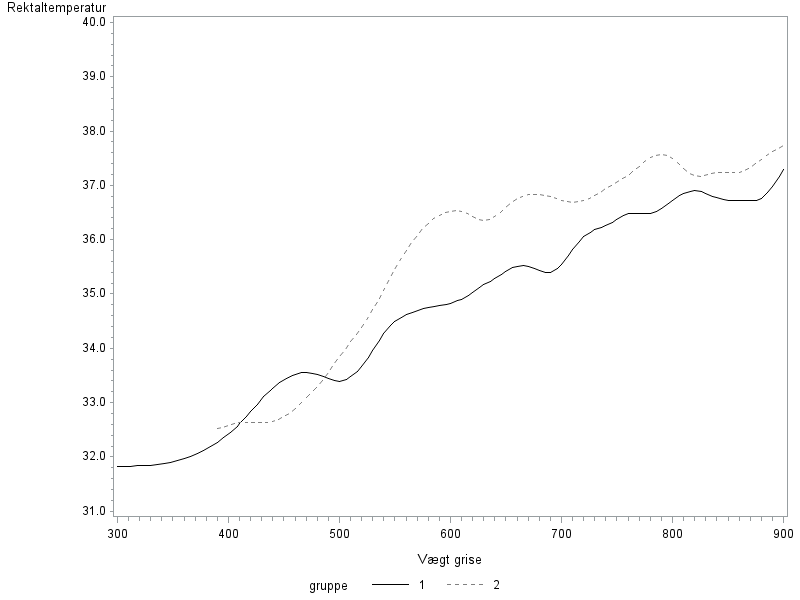
Figure 5. Correlation between piglet rectal temperature and weight. Group 1 = control (unbroken) and group 2= trial (dotted).
The piglets included in the trial weighed on average 726 g (see table 1) and there were no differences in piglet weight between the two groups. The smallest piglet in the trial weighed 300 g and approx. 10% weighed less than 500 g.
Improved survival rates with additional heat
In this herd, sows gave birth to averagely 19 liveborn piglets/litter, and as every fifth piglet in the litters weighed 900 g or less, each litter contained 3.8 small piglets. This trial demonstrated that additional heat for small newborn piglets lowered the percentage of piglets with a rectal temperature of 35°C or less from 25% to 16%. Consequently, as rectal temperature is a sound indicator of piglets’ survival chances, the additional heat around farrowing can save 0.35 piglets/litter.
Danish research previously showed that approx. 20% of all piglets weighing 1,050 g or less at birth die within 14 days after birth. If this figure is applied to the current trial, a further 0.28 piglets per litter will survive if additional heat is installed.
There are also other heat sources that can heat part of the pen floor up to +30°C within a short period. The bedding used in the pen influences the potential temperature increase and the area covered.
Estimates show that regular heat lamps generate sufficient heat in an area corresponding to of 5 cm in diameter, which is clearly not enough. Panel heating does heat a larger area than heat lamps, but it is still not sufficient.
Pig producers may consider supplying straw behind the sow during farrowing instead of installing a heat unit. However, it should be noted that straw does not in itself increase the piglets’ body temperature, but it does help the piglets stay warm. Model calculations show that the thermoneutral zone a 1 kg piglet is 26-32°C on concrete floor and 20-27°C on bedded floor.
Rather than adding more heat, it is also a possibility to raise the room temperature from the recommended 20-22°C around farrowing as sows’ heat sensitivity on day 0-3 after farrowing corresponds to the piglets’ need for heat [5]. However, this implies that all sows in a section farrow at the same time to avoid affecting appetite/feed intake among the sows and thereby reduce milk output. The drawback of this method is that it increases the risk of piglets failing to use the creep later on during in the suckling period (Pedersen et. al., 2013).
Reference List
Sørensen, T. Thorup, F. Nielsen, M.B. Hansen, C.F. (2016), Håndtering af kolde grise efter fødsel, Meddelelse nr. 1087, Videnscenter for svineproduktion
Thorup, F. Diness, L.H. Nielsen, M.B. 2016, Ekstra energi ved kuldudjævning forbedrer ikke overlevelsen hos de mindste grise, Videncenter for Svineproduktion, meddelelse 1064
Hales, J. (2011), Individual physical characteristics of piglets in farrowing pens, Master Thesis, University of Copenhagen
Andersen, H. M.-L. Pedersen L. J. (2015), Effect of radiant heat at the birth site in farrowing crates on hypothermia and behavior in neonatal piglets. Animal (2016), 10:1 pp. 128-134.
Pedersen, L. J. Malmkvist, J. Jørgensen, E. (2007) The use of a heated floor area by sows and piglets in farrowing pens, Applied Animal Behavior Science 103, p. 1-11.
Phillips, P.A. Fraser, D. Pawluczuk, B. (2000) Floor temperature preference of sows at farrowing, Applied Animal Science 67, p. 59-65
Pedersen, L.J. Malmkvist, J. Kammersgaard, T. & Jørgensen, E. (2013), Avoiding hypothermia in neonatal pigs: Effect of duration of floor heating at different room temperatures, Journal of Animal Science, 2013.91, p 425–432






